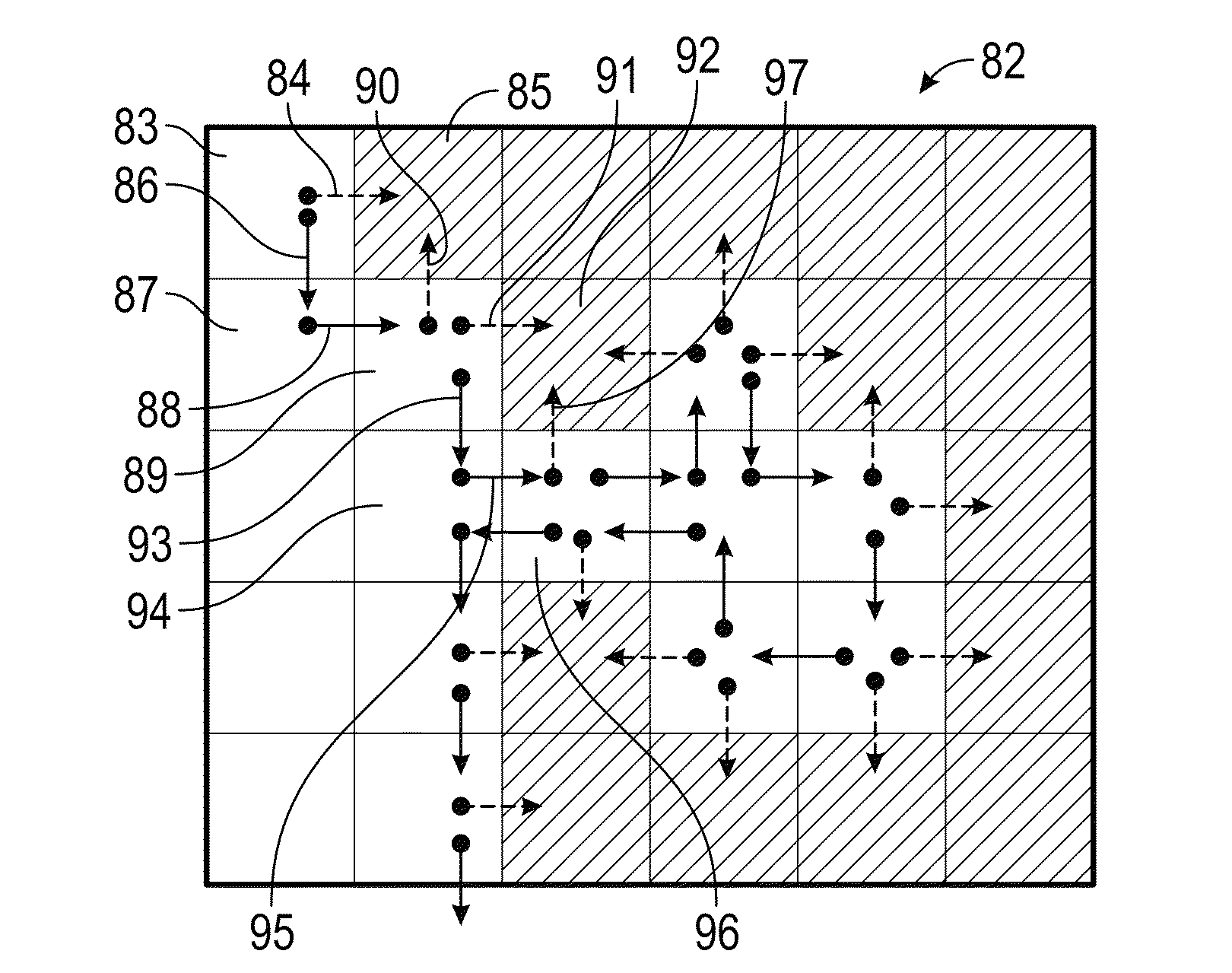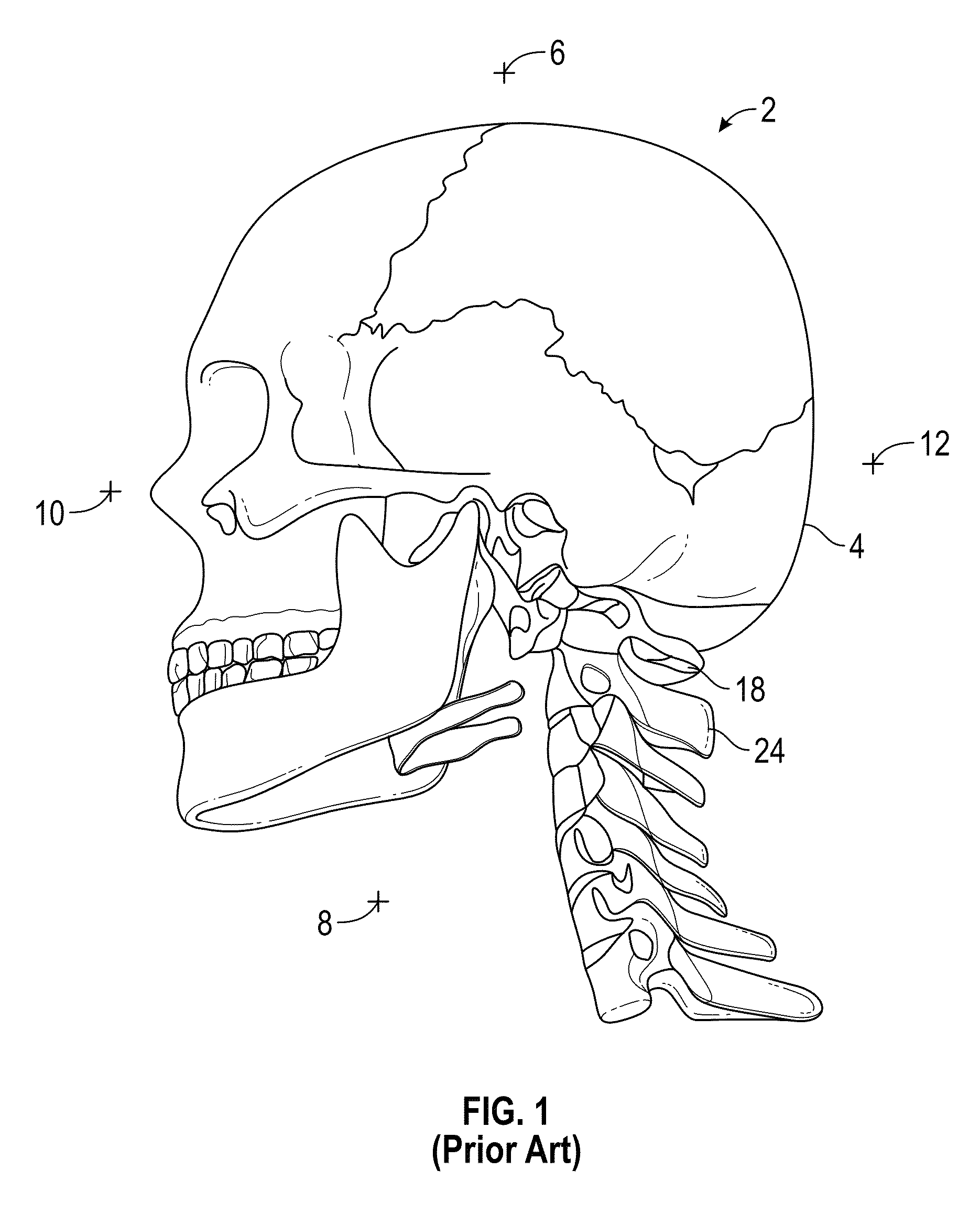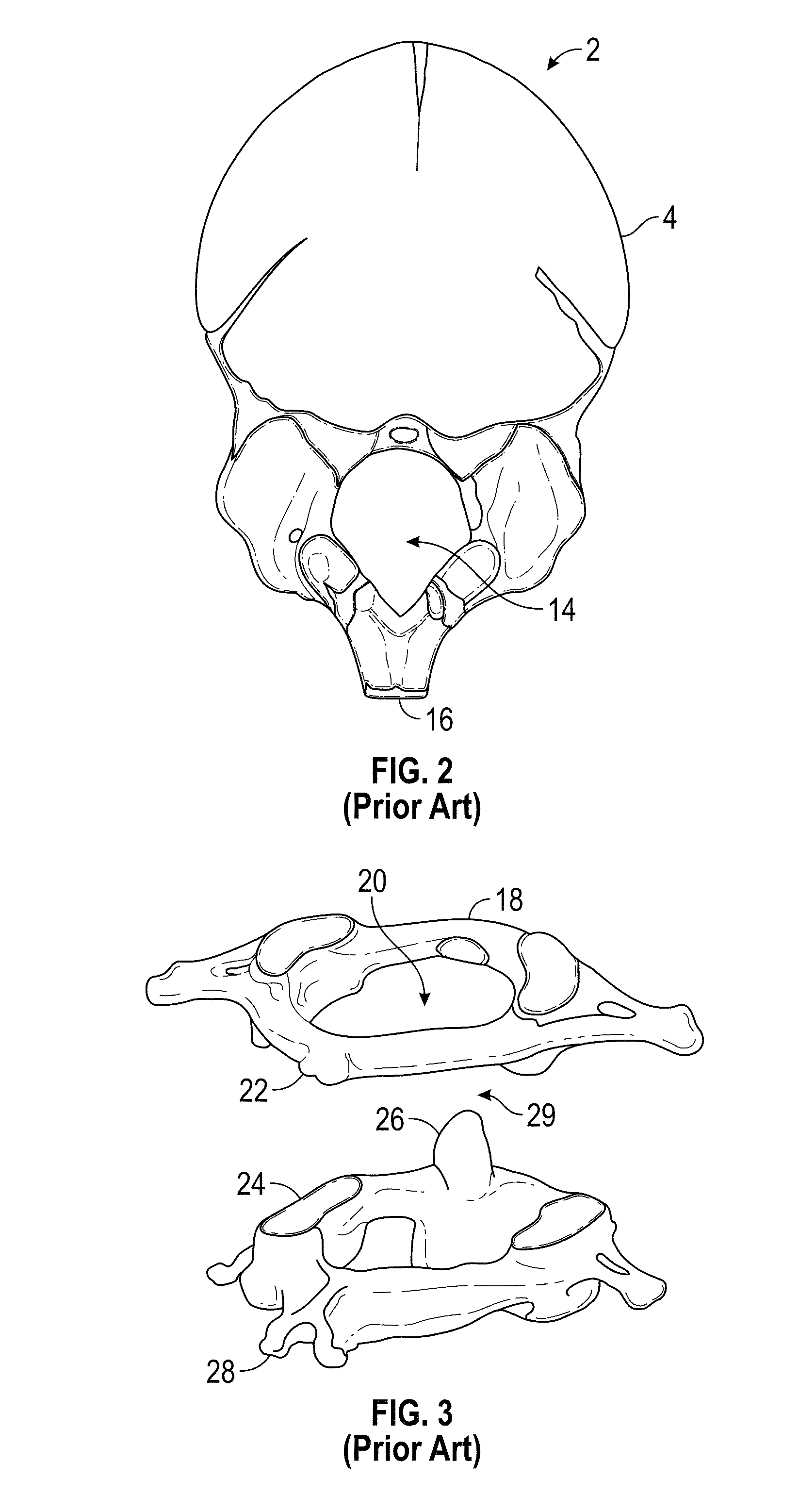Method and system of measuring anatomical features in subcutaneous images to assess risk of injury
a technology of anatomical features and subcutaneous images, applied in the field of methods and systems of measuring anatomical features in subcutaneous images to assess risk of injury, can solve the problems of inability to detect injury to occ ligaments, progress quickly and catastrophically, and spinal cord injury and death, and achieve the effect of effective indicator of ligament injury
- Summary
- Abstract
- Description
- Claims
- Application Information
AI Technical Summary
Benefits of technology
Problems solved by technology
Method used
Image
Examples
example
[0100]While the above explanation has been generalized for anatomical features with some discussion of the BDI measurement, the following description provides more details and specific information for the BDI measurement and comparison to normative data for an assessment of the risk for OCC injury. The principles, logic, and considerations, such as starting points in images and stepwise process for directional movements in analyzing pixels, which are provided in this example, can be applied to other sequences and other anatomical features. Thus, the details in this example are only exemplary and not limited to these particular anatomical features, and are explicitly intended to serve as guidelines for other sequences and anatomical features using the teachings herein.
[0101]Within at least this example, the disclosed system and method, including the software, for determining the BDI accepts as input a series of sagittal-plane CT image files focused on the cervical spine area. It is a...
PUM
 Login to View More
Login to View More Abstract
Description
Claims
Application Information
 Login to View More
Login to View More - R&D
- Intellectual Property
- Life Sciences
- Materials
- Tech Scout
- Unparalleled Data Quality
- Higher Quality Content
- 60% Fewer Hallucinations
Browse by: Latest US Patents, China's latest patents, Technical Efficacy Thesaurus, Application Domain, Technology Topic, Popular Technical Reports.
© 2025 PatSnap. All rights reserved.Legal|Privacy policy|Modern Slavery Act Transparency Statement|Sitemap|About US| Contact US: help@patsnap.com



